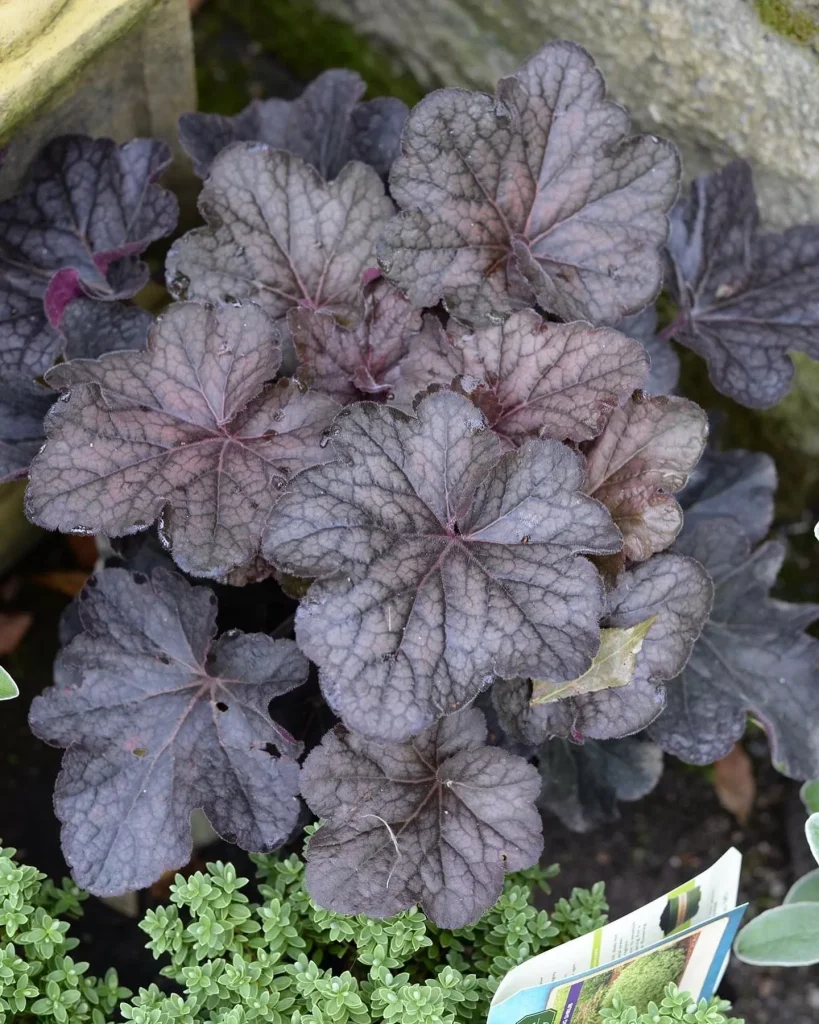
What is a knock out rose?
I wouldn’t have known a thing about roses if it wasn’t for my neighbor, Mrs. Rodriguez. She’s got this amazing garden overflowing with all sorts of flowers, and last year she convinced me to plant some Knock Out roses in my own yard. Let me tell you, those things are like the low-maintenance champions of the rose world. They bloomed constantly throughout the summer, these beautiful cherry red flowers that needed barely any fuss from me. Unlike those fancy hybrid roses I tried before, these shrugged off almost everything – even that weird aphid infestation that hit the whole neighborhood. They weren’t the biggest blooms, but they came back in waves, and the constant pop of color really brightened up my little patio. I might not be a gardening pro, but Knock Out roses? Those are winners in my book.
How to care for knock out roses?
Based on my experience with Mrs. Rodriguez’s Knock Out roses and my own fumbling attempts, caring for them isn’t too tricky. The key seems to be location. They loved Mrs. Rodriguez’s sunny corner, getting at least half a day of strong sunlight. Watering wasn’t too high maintenance either – a good soak at the base of the plant every few days seemed to do the trick, especially during the hotter months. We never deadheaded them, but she would prune them back pretty significantly in late winter or early spring. It looked a little drastic at first, but those bushes bounced right back and produced even more blooms later on. She also fertilized them once in the spring with a rose fertilizer, but that seemed to be all they needed. Overall, Knock Out roses felt more forgiving than other roses I’ve tried. They weren’t fussy about constant attention, but they sure rewarded me with a beautiful show of flowers all summer long.
How to prune knock out roses?
Pruning my Knock Out roses felt a bit intimidating the first time, but Mrs. Rodriguez assured me it was easy. We tackled them in late winter, before any new growth started. She wasn’t shy with the shears! We cut those rose canes back by a good third, maybe even half, aiming for a final height of around a foot. It seemed drastic, but she explained they bloom on new growth, so this would encourage lots of fresh flower-bearing stems. We also cleaned out any dead, diseased, or spindly canes, making sure to cut at an angle just above a healthy outward-facing bud. That way, new growth would shoot outwards and keep the bush nice and airy. It felt ruthless at the time, but those roses came back stronger than ever, putting out a nonstop parade of blooms throughout the summer. Now, pruning feels more like giving them a fresh start, and it’s definitely worth it for the explosion of color!
When to prune knock out roses?
As for timing that prune, Mrs. Rodriguez swears by late winter or early spring. That way, you’re catching the rose bush while it’s still dormant, before it starts using its energy for new growth. Ideally, you want to prune right when you start to see a hint of new green shoots peeking out from the canes. That tells you the plant’s waking up from its winter nap and is ready to put its energy into all that fresh new growth – which is where those beautiful blooms will come from. Waiting too long and letting those new shoots get too big means you might be cutting off some potential flowers. But pruning too early when the weather’s still unpredictable can expose the rose to harsh winter elements. So keeping an eye on your Knock Out roses in late winter and looking for those signs of new life is the sweet spot for a successful prune.
How long do knock out roses live?
My experience with Knock Out roses makes me think they’re surprisingly long-lived, especially compared to those finicky hybrid roses I tried before. Mrs. Rodriguez has these Knock Out roses in her garden that look like they’ve been there for years. They’re big, healthy bushes that flower like crazy every summer. I remember asking her about it once, and she said with proper care, Knock Out roses can last for decades! That’s pretty impressive, considering most of my gardening attempts fizzle out after a season or two. Now, I haven’t personally had mine for that long, but seeing how well Mrs. Rodriguez’s have thrived gives me hope that mine will be gracing my patio with their blooms for many summers to come. With a little love – sunlight, water, some pruning TLC – these Knock Out roses seem like real trooper plants that can reward you with years of gorgeous flowers.
Do knock out roses need full sun?
While my Knock Out roses did great in Mrs. Rodriguez’s sunny spot, I wouldn’t say they absolutely need full sun all day long. They were definitely getting at least half a day of strong sunlight, maybe more, and that seemed to keep them happy. I’ve heard some folks mention they can tolerate some afternoon shade, especially in really hot climates. But from what I’ve seen, the more direct sun they get, the more prolific the blooms seem to be. So, if you’re looking for maximum flowering action, giving your Knock Out roses a good chunk of sunny real estate might be the way to go. Of course, it never hurts to chat with a local nursery or gardening expert. They can give you the best advice on sun requirements based on your specific climate and how much shade your yard throws throughout the day.
Are knock out roses deer resistant?
Unfortunately, my dream of Knock Out roses being a magical deer repellent turned out to be just that – a dream. Those beautiful blooms turned out to be a beacon for the local deer herd according to Mrs. Rodriguez. She caught them nibbling on the flowers and new growth a couple of times. While the roses themselves are tough and bounced back, it was frustrating to see my pretty blooms getting munched on. I guess even the mighty Knock Out rose isn’t completely deer-proof. If deer are a big problem in your area, you might want to consider planting some rose varieties that are known to be less deer-appealing, or look into some deer repellent options to protect those precious blooms.
Can knock out roses grow in pots?
Absolutely! Knock Out roses actually thrive in pots, which is what originally convinced me to give them a try in my yard. My patio doesn’t get a ton of sun, so planting roses in the ground wasn’t really an option. But Mrs. Rodriguez assured me Knock Out roses do just fine in containers. She even has a few herself on her little balcony!
The key seems to be choosing a pot that’s big enough. At least twice the size of the pot the rose comes in gives the roots room to grow. And make sure the pot has drainage holes – Knock Out roses don’t like sitting in soggy soil. I used a good quality potting mix for mine, and Mrs. Rodriguez throws in a handful of bone meal sometimes to encourage healthy roots. As long as they get a good amount of sunlight (at least 6-8 hours a day), watering them regularly, and maybe some occasional fertilizer, Knock Out roses in pots can be a vibrant addition to your patio or balcony. Just remember, container gardening means they might dry out faster than roses planted in the ground, so keep an eye on the moisture levels and adjust your watering based on the weather.
Do knock out roses have thorns?
Knock Out roses do have thorns, but they’re not quite as bad as some other rose varieties. At least, that’s been my experience. Sure, they’ll prick you if you’re not careful, but they don’t seem to be quite as numerous or vicious as the ones on those fancy hybrid roses I tried before.
They haven’t been a major problem for me. I can usually prune them and deadhead the spent flowers without getting too many scratches. But if you’ve got small kids or pets who might come barreling into the roses, it might be a good idea to plant them in a spot where they won’t get accidentally tangled up in the thorns. Maybe use some edging or plant something lower-growing in front to create a bit of a barrier. Overall, the thorns haven’t been a dealbreaker for me, and the easy care and constant blooms make Knock Out roses a winner in my book, even with a few prickles.
Are knock out roses grafted?
You know, that’s a good question. I never actually thought about it before, but thanks to some chats with Mrs. Rodriguez and a little browsing online, I can tell you Knock Out roses can be grafted or grown on their own roots.
Apparently, some Knock Out roses are grafted onto a special rootstock, like Fortuniana rootstock. This can be especially helpful in areas with nematode problems, as the rootstock might be more resistant to those nasty soil pests.
The tricky part for me is telling if my Knock Out roses are grafted or not. Mrs. Rodriguez said sometimes you might see a little bump or swelling where the graft is, but mine don’t seem to have that. There can also be suckers popping up from below the graft on grafted roses, but I haven’t seen any of those either.
Honestly, grafted or not, mine have been pretty easy to care for and flower beautifully all season long. So, from a personal experience standpoint, it doesn’t seem to make a huge difference in their overall care. If you’re curious about whether yours are grafted, you might try reaching out to the nursery you bought them from or doing a quick internet search to see if they mention the rootstock used for that specific Knock Out variety.
Can knock out roses grow in shade?
Knock Out roses can tolerate some shade, but they definitely won’t be as happy as they would be in full sun. Here’s what I’ve learned from my experience with Mrs. Rodriguez’s Knock Out roses and my own:
- Sun is best: In Mrs. Rodriguez’s sunny corner, her Knock Out roses thrived. They bloomed constantly with those beautiful cherry red flowers. So, if you have a spot with at least 6-8 hours of direct sunlight, that’s ideal.
- Partial shade is okay: Now, I’ve heard some folks say they’ve had success with Knock Out roses in partial shade, especially afternoon shade in hot climates. They might not bloom quite as much, but they should still survive.
- Less bloom, more leg: One thing to keep in mind is that with less sun, your Knock Out rose might spend more energy growing tall and leggy instead of putting out flowers.
- Know your shade: There’s a big difference between dappled shade from high tree branches and dense shade under a building. If your shade is constant and heavy, Knock Out roses might not be the best choice.
Overall, if you have a shady spot and your heart is set on roses, Knock Out roses might be worth a try, but just be prepared for potentially fewer blooms and a leggier plant. You could also explore other shade-tolerant rose varieties that might be happier with less direct sunlight.
Are knock out roses perennials?
In my experience with Knock Out roses, they act like perennials. They come back year after year, rewarding you with those beautiful blooms season after season.
Here’s why I consider them perennial friends in my garden:
- Winter slumber: Knock Out roses die back in the winter here, like most plants. The ground gets cold, the flowers fade, and the whole bush looks pretty bare. But don’t be fooled!
- Spring renewal: Come spring, though, they magically come back to life. New green shoots start popping out from the canes, and before you know it, the bush is full of healthy foliage again.
- Summer blooms: Then, the best part – summer! That’s when the Knock Out roses erupt in a seemingly endless show of blooms. They flowered constantly throughout the summer in my yard, those cheerful pops of color brightening up my patio.
- Years of blooms: Mrs. Rodriguez’s Knock Out roses are living proof that these roses can thrive for years. Hers have been in her garden for what seems like forever, and they still produce a ton of flowers each summer.
So, as long as you give them some basic care – sunlight, water, and a little pruning love – Knock Out roses seem to act like reliable perennials, returning year after year to fill your garden with summertime blooms.
Do knock out roses climb?
Knock Out roses are not climbers, at least not in my experience. They’re more like bushy shrubs that grow outwards rather than upwards. Here’s what I’ve seen with mine and from chatting with Mrs. Rodriguez:
- Bushy and beautiful: Knock Out roses tend to grow into full, rounded bushes. Mine reached about 4 feet tall and 3 feet wide, filling out nicely in the garden bed.
- No clinging tendencies: Unlike climbing roses that have long, flexible canes that can wrap around supports, Knock Out rose canes are sturdier and more upright. They don’t seem to have any natural inclination to climb.
- Stakes for support (optional): While they may not climb, you can use stakes or a trellis for support if needed. This could be helpful if your Knock Out rose gets a bit leggy or you want to train it to grow in a specific direction. Mrs. Rodriguez tied hers to a small trellis near a walkway to keep the thorns away from passersby.
- Focus on blooms: But overall, Knock Out roses seem happy to grow as bushy shrubs. They put their energy into producing those beautiful blooms throughout the summer, rather than trying to climb.
So, if you’re looking for a rose that will gracefully climb a trellis or wall, Knock Out roses might not be the best choice. There are plenty of climbing rose varieties out there that would be a better fit. But if you’re looking for a low-maintenance shrub that will reward you with a stunning display of flowers all summer long, Knock Out roses are a great option!
If i die, water my plants!



